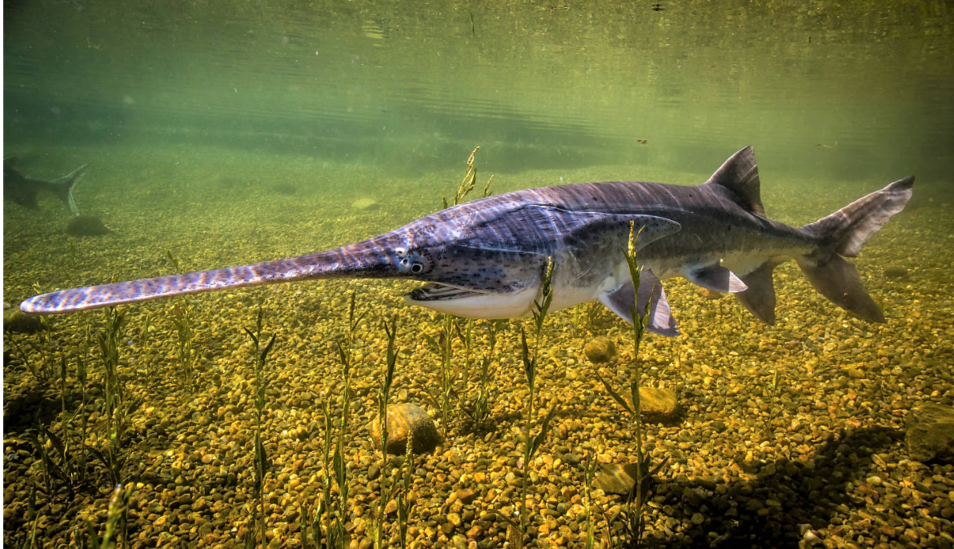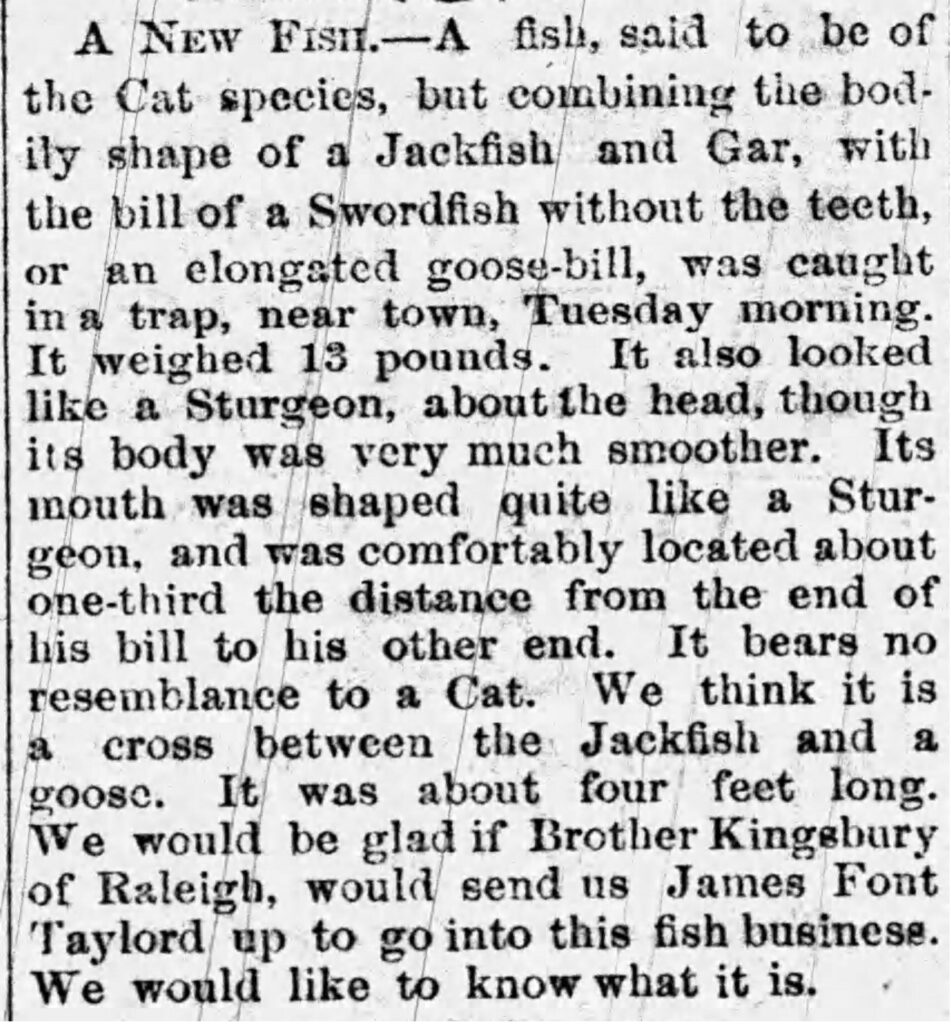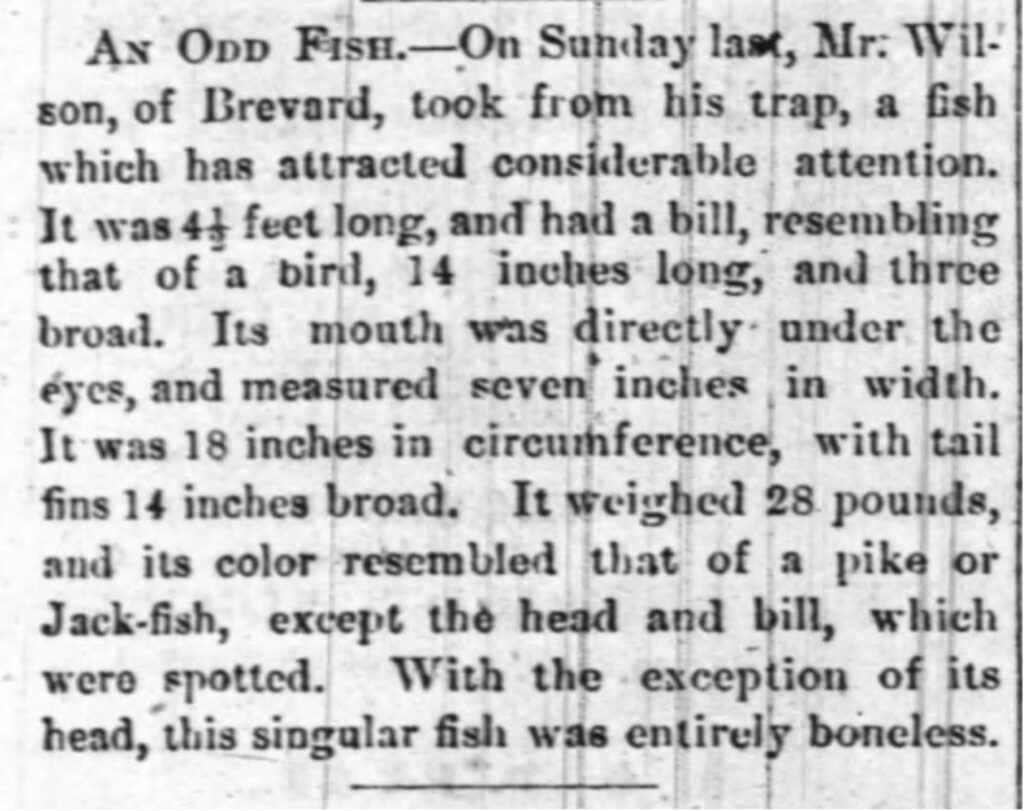Paddlefish, Polyodon spathula, is a unique and ancient fish species with no close relatives in North America (Figure 1). This prehistoric monster has been part of the Upper Tennessee River Basin fish community for millennia, if not longer. Unfortunately, their numbers have dwindled across their range over the last 100+ years due to damming, overfishing, and pollution. Due to their decline and limited historical survey data over the last 200 years, it is unknown if and how far they ventured into North Carolina. Although there are no vouchered specimens of Paddlefish in North Carolina (Tracy et al. 2020), Professor Edward Drinker Cope (1870) first reported the species in North Carolina from anecdotal reports where he claimed they extended upstream in the French Broad River near Asheville. Since Cope’s initial claim, there are almost no other records of Paddlefish other than a fisherman that claimed to have caught one in October 1983 (Gengerke 1986), until recently.

Recent unearthed newspaper articles from the 1870s strengthen the claims made by Professor Cope and others about the presence of Paddlefish in the French Broad River. The first record supporting Professor Cope’s claims comes from an article in the North Carolina Citizen, an Asheville-based newspaper, in July 1873 (Anon 1873; Figure 2). They described a four-foot long 13-lb. fish caught near Asheville, “said to be of the Cat species, but combining the bodily shape of a Jackfish and Gar, with the bill of a Swordfish without the teeth, or an elongated goose-bill, was caught in a trap, near town, Tuesday morning.” Paddlefish, also known as “Spoonbill Cats”, are the only species that could fit the description with a four-foot-long body and an “elongated goose-bill.”

The following year, a more thorough description of a Paddlefish was published in the Weekly Pioneer, a Brevard, North Carolina newspaper (Anon. 1874; Figure 3), where a local man caught a fish in his trap that was “…4½ feet long, and had a bill, resembling that of a bird, 14 inches long, and three broad.” This record extends potential habitat for Paddlefish to the headwaters of the French Broad River in Transylvania County. The two newspaper articles put the fish being caught during the summer months and suggest that Paddlefish may have been a permanent resident for much of the French Broad River instead of a seasonal resident coming to spawn in late winter/spring.

Although the required backwater and deep pool habitat required for Paddlefish to thrive is now limited in the upper French Broad River watershed, North Carolina Wildlife Resource Commission biologists are hopeful that this ancient species can be brought back to North Carolina waters. Current efforts to restore slough/oxbow habitats in the upper French Broad (https://conservingcarolina.org/mud-creek-floodplain-restoration-is-underway/; accessed June 17, 2020) are underway and may provide the slackwater and deep pool habitat needed to reestablish this species in the French Broad River.
Literature Cited
Anonymous (Anon.). 1873. A new fish. The Asheville Weekly Citizen. Asheville, NC. Thursday, July 24, 1873.
Anon. 1874. An odd fish. Weekly Pioneer. Asheville, NC. Saturday, June 27, 1874.
Cope, E.D. 1870. A partial synopsis of the fishes of the fresh waters of North Carolina. Proceedings of the American Philosophical Society 11: 448-495.
Gengerke, T.W. 1986. Distribution and abundance of the Paddlefish in the United States. Dillard, J.G., K.L. Graham, and T.R. Russell. (eds.) The Paddlefish: status, management, and propagation. North Central Division, American Fisheries Society, Special Publication, 7: 22- 35.
Tracy, B.H., F.C. Rohde, and G.M. Hogue. 2020. An annotated atlas of the freshwater fishes of North Carolina. Southeastern Fishes Council Proceedings No. 60. Volume 1. 198p.
Very interesting blog post. Thank you. It would really be something to document one in that area again. I’ll be looking!
“We think that it is a cross between the jack fish and a goose.” Now that would be something!….not that a paddlefish isn’t. Did you dig up those news paper articles? Those are some good finds.